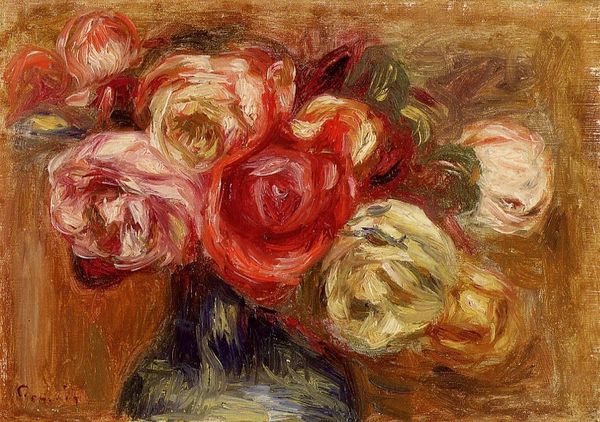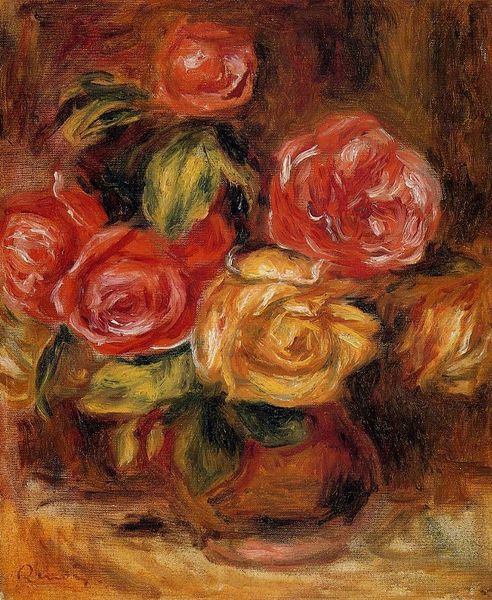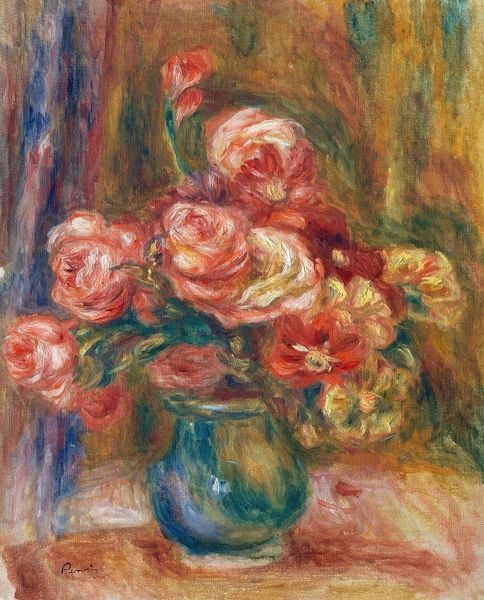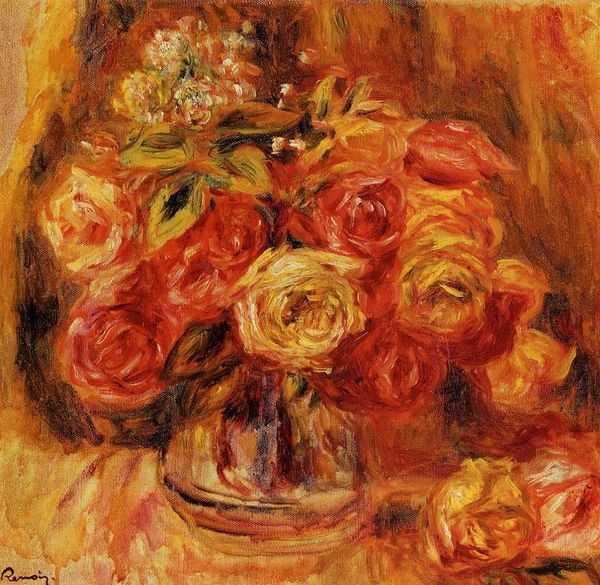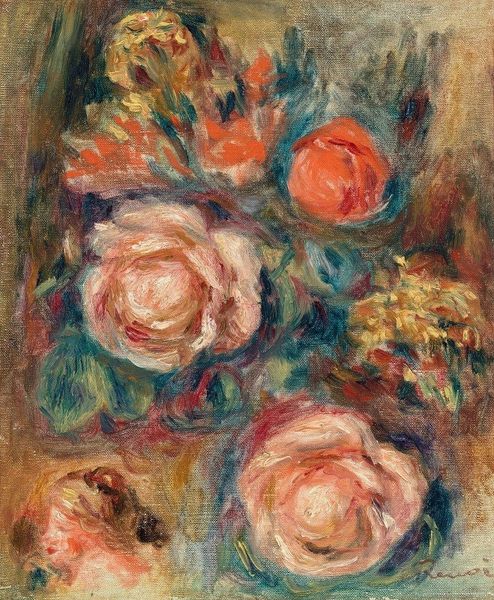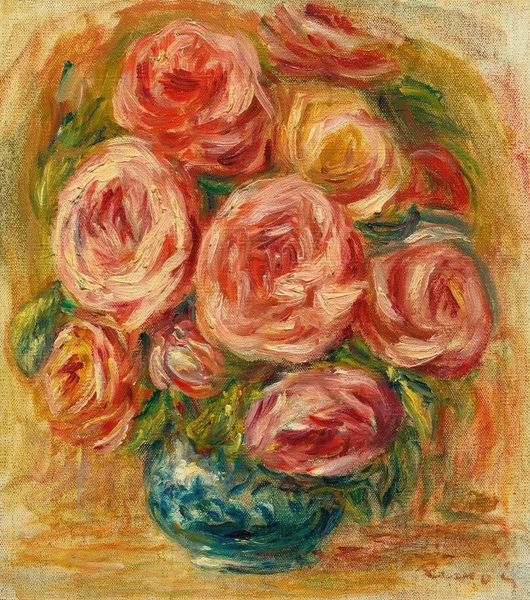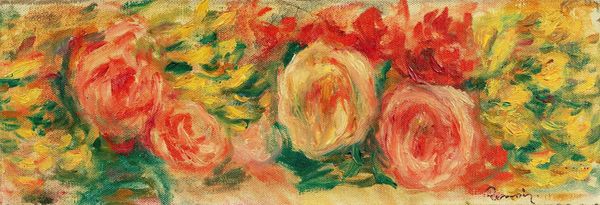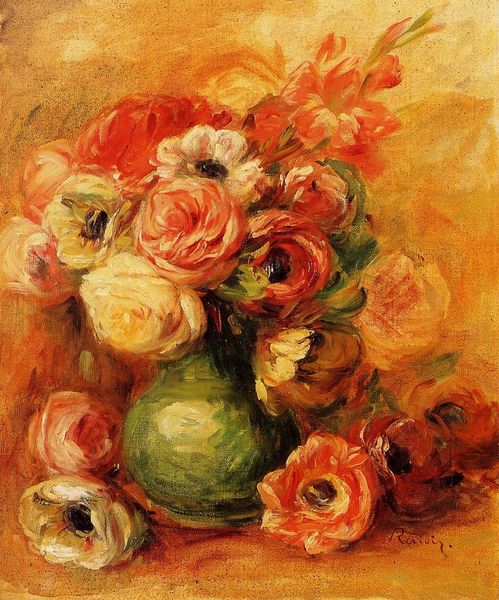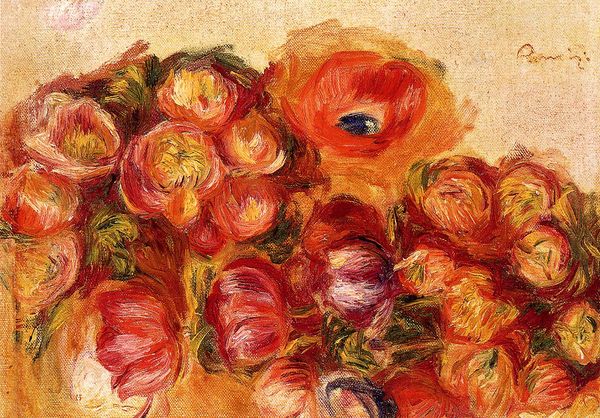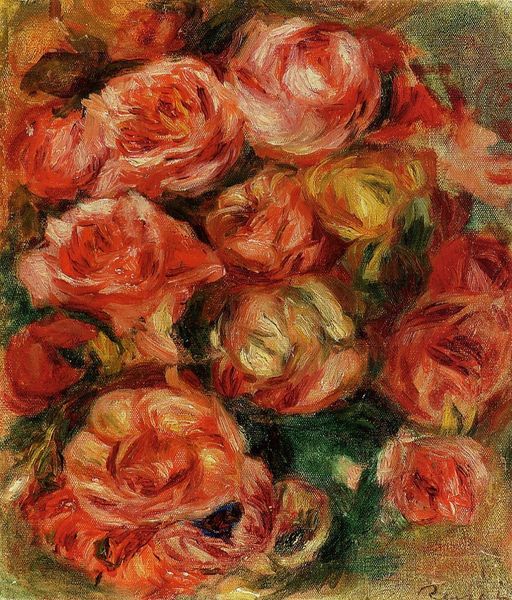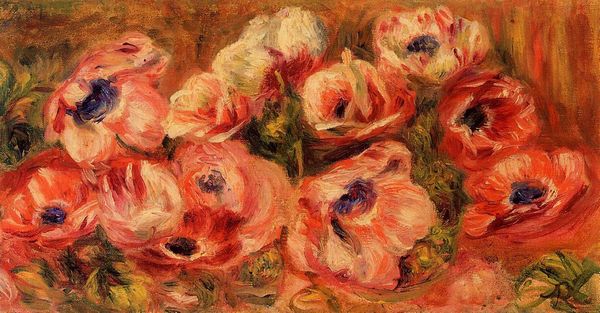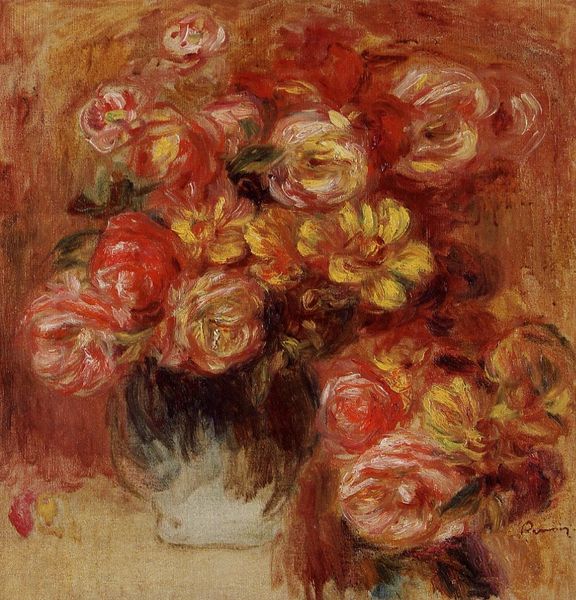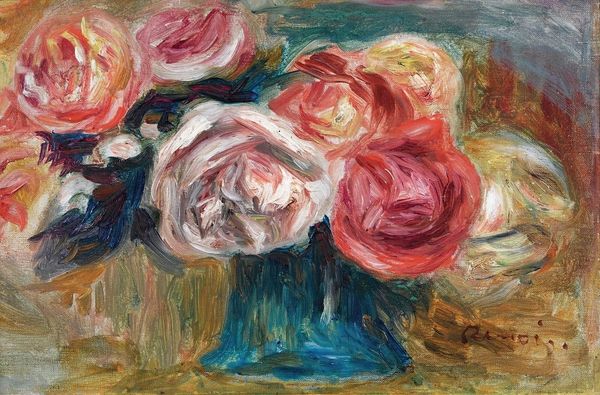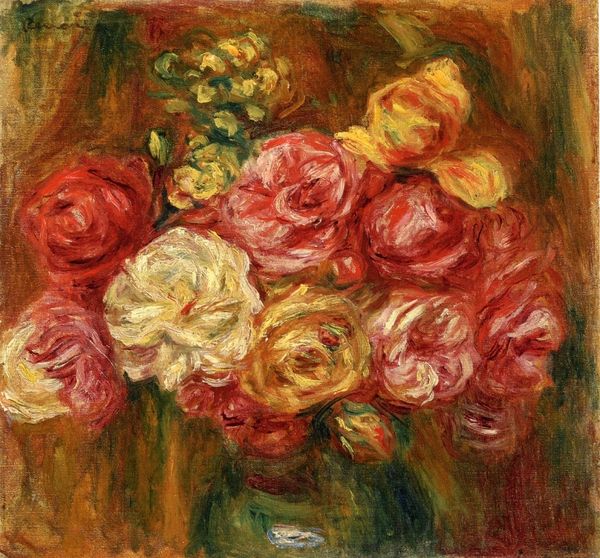
painting, oil-paint, impasto
#
painting
#
impressionism
#
oil-paint
#
oil painting
#
impasto
#
orientalism
Copyright: Public domain
Pierre-Auguste Renoir, sometime in the late 19th or early 20th century, painted this oil on canvas, "Vase of Flowers." In his time, Renoir was celebrated as a master of feminine beauty. He was one of the leading figures of Impressionism, a movement that radically transformed painting by focusing on the fleeting effects of light and color, and which, in it's own way, transformed the aesthetic of femininity. In this context, floral paintings were often associated with the domestic sphere, a realm traditionally associated with women. But they can be so much more. The sensuous handling of paint, the way in which the brushstrokes build up the image with almost tangible texture, invites us to engage with the painting on a deeply sensory level. The flowers can be appreciated as symbols of beauty and transience but they can also be regarded as signifiers in a broader cultural narrative about how women are seen and see themselves. Renoir’s “Vase of Flowers” encapsulates both the decorative charm and the more profound, gendered aspects of still life painting, while also reminding us of the enduring power of art to affect our senses.
Comments
No comments
Be the first to comment and join the conversation on the ultimate creative platform.
